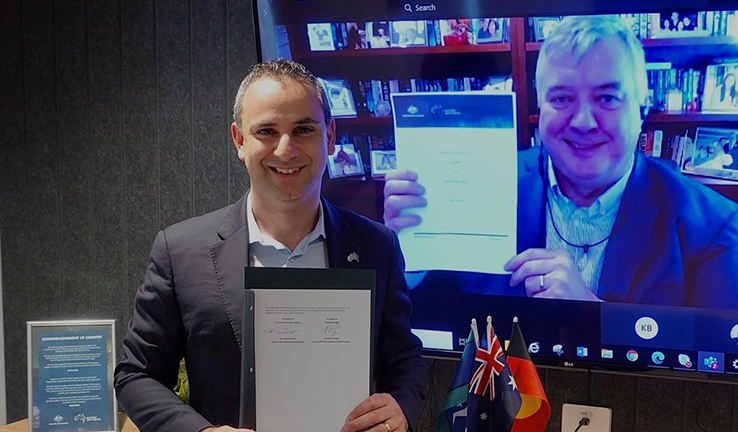Australian Space Agency signs with Viasat Australia

The Australian Space Agency and Viasat Australia have signed a Statement of Strategic Intent and Cooperation. The joint statement will support the delivery of the Agency’s 10-year plan to transform and grow the space industry.
The agreement was signed by Space Agency Head Mr Enrico Palermo and Viasat’s Asia-Pacific vice president, Mr Peter Girvan.
The two partners acknowledge common areas of strategic interest and growth, and potential new areas of collaboration which contribute to the Australian Civil Space Strategy and the Agency’s National Civil Space Priority Areas.
Viasat is establishing Australia as its Satellite Engineering “hub” for regional Asia Pacific operations by more than doubling its current workforce in the next two-plus years. Initially this will be for the ViaSat-3 generation satellites but will continue for subsequent generations of satellites already under development. Each satellite has an expected life of 15 years.
Viasat is one of the companies bidding for Defence’s Joint Project 9102 SATCOM project, offering a version of its Hybrid Adaptive Network (HAN) which has been selected by the US Air Force’s AFWERKS innovation hub as part of its Joint All Domain Command and Control (JADC2) demonstrator project.
It has been publicly stated that the introduction of the ViaSat-3 satellite constellation will help the satellite communications industry rapidly evolve as the space platform is expected to deliver abundant amounts of capacity to serve millions of people and devices—anywhere: on the ground, in the air and at sea. Australia is well positioned to contribute, capitalise and prosper from this satellite evolution, providing broadband communications services and ancillary IP technology exportation across the region.
Viasat is also constructing an ultra-high capacity ViaSat-3 class satellite aimed at the Asia Pacific region as part of its global ViaSat-3 constellation. When complete, the ViaSat-3 constellation will have extremely flexible, cost-effective on-orbit capacity that will provide opportunities to develop both civilian and government business in Australia.
The company will also build and operate:
- Hundreds of Satellite Access Nodes (SANs), or gateways, connected to reliable, high speed, access fibre. The majority of these SANs will be located in rural and regional areas
- A resilient, very high-speed, backbone fibre network including Core Nodes installed in Data Centres
- Two satellite Telemetry, Tracking and Control (TT&C) sites equipped with 9m dishes.
